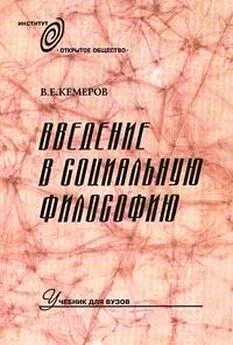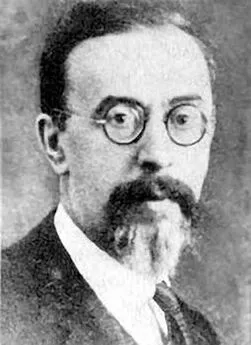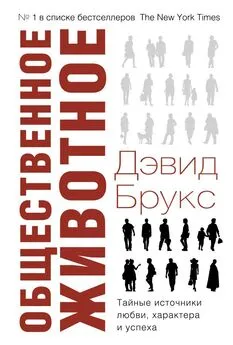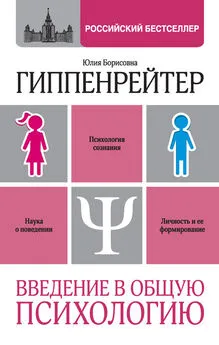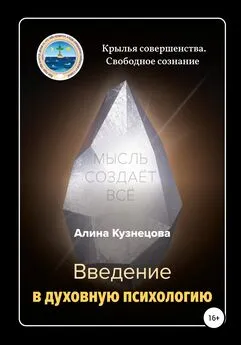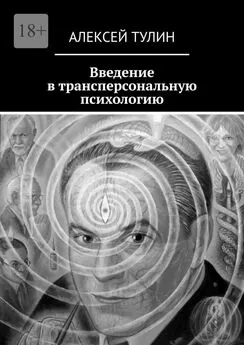Эллиот Аронсон - Общественное животное. Введение в социальную психологию
- Название:Общественное животное. Введение в социальную психологию
- Автор:
- Жанр:
- Издательство:неизвестно
- Год:неизвестен
- ISBN:нет данных
- Рейтинг:
- Избранное:Добавить в избранное
-
Отзывы:
-
Ваша оценка:
Эллиот Аронсон - Общественное животное. Введение в социальную психологию краткое содержание
Общественное животное. Введение в социальную психологию - читать онлайн бесплатно полную версию (весь текст целиком)
Интервал:
Закладка:
56. Cracker, J., Thompson, L.L., McGraw, K.M., amp; Ingerman, C. (1987). Downward comparison, prejudice, and evaluations of others: Effects of self-esteem and threat. Journal of Personality and Social Psychology, 52, 907-916.
57. Dollard, J. (1987). Class and caste in a southern town. New Haven: Yale University Press.
58. Bettelheim, B., amp; Janowit^, M. (1964). Social change and prejudice, including dynamics of prejudice. New York: Free Press.
59. Tumin, M., Barton, P., amp; Burrus, B. (1958). Education, prejudice, and discrimination: A study in readiness for desegregation. American Sociological Review, 23, 41-49.
60. Levitas, M. (1969). America in crisis. New York: Holt, Rinehart and Winston.
61. Dollard, J. (1938). Hostility and fear in social life. Social Forces,]7, 15-26.
62. Roberts, E., цит. по: P. Jacobs and S. Landau (1971). To serve the devil (Vol. 2, p. 71). New York: Vintage Books.
63. Cracker, С., цит. по: P. Jacobs and S. Landau (1971). To serve the devil (Vol. 2, p. 81). New York: Vintage Books.
64. Greeley, A., amp; Sheatsley, P. (1971). The acceptance of desegregation continues to advance. Scientific American, 225 (6), 13-19. См. также: Vanneman, R.D., amp; Pettigrew, T.F. (1972). Race and relative deprivation in the urban United States. Race, 13, 461-486.
65. Sherif, M., Harvey, O.J., While, B.J., Hood, W., amp; Sherif, C. (1961). Intergroup conflict and cooperation: The Robbers Cave experiment. Norman: University of Oklahoma Institute of Intergroup Relations.
66. Hovland, C., amp; Sears, R. (1940). Minor studies of aggression: Correlation of lynchings with economic indices. Journal of Psychology, 9, 301-310.
67. Klineberg, 0. (1971). Black and white in international perspectives. American Psychologist, 26,119-128.
68. Speer, A. (1970). Inside the Third Reich: Memoirs (R. Winston and C.Winston, Trans.). New York: Macrnillan.
69. Miller, N., Bugelski, R. (1948). Minor studies in aggression: The influence of frustrations imposed by the in-group on attitudes expressed by the out-group. Journal of Psychology, 25,437-442.
70. Rogers, R., amp; Prentice-Bum, S. (1981), Deindividuation and anger-mediated interracial aggression: Unmasking regressive racism. Journal of Personality and Social Psychology, 41,63-73.
71. Weatherly, D. (1961). Antisemitism and the expression of fantasy aggression. Journal of Abnormal and Social Psychology, 62, 454-457.
72. Adomo, Т., Frenkel-Brunswick, E., Levinson, D., amp; Sanford, R.N. (1950). The authoritarian personality. New York: Harper.
73. McFarland, S.M., Ageyev, V.S., amp; Abalakina-Paap, M.A. (1992). Authoritarianism in the former Soviet Union. Journal of Personality and Social Psychology, 63, 1004-1010.
74. Greeley amp; Sheatsley, Acceptance of desegregation.
75. Pettigrew, T.F. (1959). Regional differences in anti-Negro prejudice. Journal of Abnormal and Social Psychology, 59, 28-36.
76. Pettigrew, T.F. (1958). Personality and sociocultural factors and intergroup attitudes: Across-national comparison. Journal of Conflict Resolution, 2, 29-42.
77. Watson, J. (1950). Some social and psychological situations related to change in attitude. Human Relations, 3, 15-56.
78. Kirkland, S.J., Greenberg, J., amp; Pys^c^ynski, T. (1987). Further evidence of the deleterious effects of overheard derogatory ethnic labels: Derogation beyond the target. Personality and Social Psychology Bulletin,]3, 216-227.
79. MacCrone, 1. (1937). Race attitudes in South Africa. London: Oxford University Press.
80. Laarsfeld, P. (1940). Radio and the printed page. New York: Duell, Sloan amp; Pearce.
81. Deutsch, M., amp; Collins, A^. (1951). Interracial housing: A psychological evaluation of a social experiment. Minneapolis: University of Minnesota Press. CM. также: Wilner, D., Walkley.R., amp; Cook, S. (1955). Human relations in interracial housing. Minneapolis: University of Minnesota Press.
82. Brehm, J. (1959). Increasing cognitive dissonance by a fait-accompli. Journal of Abnormal and Social Psychology, 58, 379-382.
83. Darley, D., amp; Berscheid, E. (1967). Increased liking as a result of the anticipation of personal contact. Human relations, 20, 29-40.
84. National Opinion Research Center (1980). General social surveys, 1972- 1980: Cumulative codebook. Storrs, CT: Roper Public Opinion Research Center, University of Connecticut.
85. Pettigrew, T.F. (1961). Social psychology and desegregation research. American Psychologist, 16,105-112.
86. Clark, К.В. (1953). Desegregation: An appraisal of the evidence. Journal of Social Issues, 9, No. 4.
87. Stouffer, S., Suchman, E., DeVinney, L., Star, S., amp; Williams, R., Jr. (1949). The American soldier: Adjustment during army life. In Studies in social psychology in WW II (Vol. 1). Princeton: Princeton University Press.
88. Kramer, B. (1951). Residential contact as a determinant of attitudes toward Negroes. Unpublished Ph.D. dissertation, Harvard University. Winder, A. (1952). White attitudes towards Negro-white interaction in an area of changing racial composition. American Psychologist, 7, 330-331.
89. Asher, S., amp; Alien, V. (1969). Racial preference and social comparison processes. Journal of Social Issues, 25, 157-166. Stephan, W., amp; Kennedy, J. (1975). An experimental study of inter-ethnic competition in segregated schools. Journal of School Psychology, 13, 234-247. Gerard, H., amp; Miller, N. (1976). School desegregation. New York: Plenum.
90. Stephan, W.G. (1978). School desegregation: An evaluation of predictions made in Brown v. The Board of Education. Psychological Bulletin, 85, 217-238.
91. Lester, J. (1971). Beep! Beep! Umgawa! Black Power! In R. Kytie (Ed.), Confrontation: Issues of the 70's (pp. 162-181). New York: Random House.
92. Deutsch amp; Collins, Interracial housing.
93. Sherif, M., amp; Sherif, C. (1956). An outline of social psychology. New York: Harper amp; Bros. Sherif, Harvey, White, Hood, amp; Sherif, Intergroup conflict and cooperation.
94. Deutsch, M. (1949). A theory of cooperation and competition. Human Relations, 2, 129-152. Deutsch, M. (1949). An experimental study of the effects of cooperation and competition upon group process. Human Relations, 2, 199-232.
95. Keenan, P., amp; Camevale, P. (1989). Positive effects of within-group competition on between-group negotiation. Journal of Applied Social Psychology, 19, 977- 992.
96. Aronson, E., Stephan, С., Sikes, J., Blaney, N., amp; Snapp, M. (1978). Thejigsaw classroom. Beverly Hills, CA: Sage Publications. Aronson, E., amp; Osherow, N. (1980). Cooperation, prosocial behavior, and academic performance: Experiments in the desegregated classroom. In L. Bickman (Ed.), Applied Social Psychology Annual (Vol. I, pp. 163-196). Beverly Hills, CA: Sage Publications.
97. Stephan, W. (1975). An experimental study of interethnic competition in segregated schools. Journal of School Psychology, 13, 234-247.
98. Geffner, R. (1978). The effects of interdependent learning on self-esteem, inter-ethnic relations, and intra-ethnic attitudes of elementary school children: A field experiment. Unpublished Ph. D. dissertation, University of California, Santa Cruz. Gon^ale^, A. (1979). Classroom cooperation and ethnic balance. Unpublished Ph. D. dissertation, University of California, Santa Cruz.
99. Lucker, W., Rosenfield, D., Sikes, J., amp; Aronson, E. (1977). Performance in the interdependent classroom: A field study. American Educational Research Journal, 13, 115-123.
100. Desforges, D.M., Lord, C.G., Ramsey, S.L., Mason, J.A., Van Leeuwen, M.D., West, S.C., amp; Lepper, M.R. (1991). Effects of Structured Cooperative Contact on changing negative attitudes towards stigmatized social groups. Journal of Personality and Social Psychology, 60, 531-544.
101. Gaertner, S.L., Mann, J.A., Dovidio, J.F., Murrell, A. J., amp; Pomare, M. (1990). How does cooperation reduce intergroup bias? Journal of Personality and Social Psychology, 59,692-704.
102. Bridgeman, D. (1981). Enhanced role-taking through cooperative interdependence: A field study. Child Development, 52, 1231-1238.
103. Stephan, С., Kennedy, J., amp; Aronson, E. (1977). Attribution of luck or skill as a function of cooperating or competing with a friend or acquaintance. Sociometry, 40, 107-1 II. Presser, N., Stephan, C., Kennedy, J., amp; Aronson, E. (1978). Attributions to success and failure in cooperative, competitive, and interdependent interaction. European Journal of Social Psychology, 8, 269-274. Stephan, S., Burnhain, M., amp; Aronson, E. (1979). Attributions for success and failure after cooperation, competition, or team competition. European Journal of Social Psychology, 9, 109-114,
104. Slavin, R. (1990). Research on cooperative learning: Consensus and controversy. Educational Leadership, 52-54.
105. Kohn, A. (1986). No Contest. Boston: Houghton Mifflin.
106. McConahay, J.B. (1981). Reducing racial prejudice in desegregated schools. In W.D. Hawley (Ed.), Effective school desegregation. Beverly Hills, CA: Sage.
107. Gonzalez., A. (1979). Classroom cooperation and ethnic balance. Unpublished Ph.D. dissertation, University of California, Santa Cruz. Aronson, E., amp; Gonzalez., A. (1988). Desegregation, jigsaw and the Mexican-American experience. In P. Katz and D. Taylor, Eliminating Racism. New York: Plenum.
108. Pettigrew, T.F. (1961). Social psychology and desegregation research. American Psychologist, 15, 61-71.
1. Darwin, С. (1910). The expression of emotions in man and animals. New York: Appleton.
2. Carnegie, D. (1937). How to win friends and influence people. New York: Simon amp; Schuster. Рус. пер. - КарнегиДейл. Как завоевывать друзей и оказывать влияние на людей. М.: Прогресс, 1989.
3. Remmers, Н.Н., amp; Radler, D.H. (1958). Teenage attitudes. Scientific American, 198 (6), 25-29.
4. Lemmann, Т., amp; Solomon, R. (1952). Group characteristics as revealed in sociometric patterns and personality ratings. Sociometry, 15, 7-90.
5. Homans, G. (1961). Social behavior: Its elementary forms. New York: Harcourt, Brace and World.
6. Walster (Hatfleld), E., Aronson, V., Abrahams, D., amp; Rottman, L. (1966). Importance of physical attractiveness in dating behavior. Journal of Personality and Social Psychology, 5,508-516.
7. Буте, D. (1969). Attitudes and attraction. In L.Berkowitz (Ed.), Advances in experimental social psychology (Vol. 4). New York: Academic Press.
8. Sherif, М. (1956). Experiments in group conflict. Scientific American, 195, 53-58.
9. Aronson, E., Stephan, C., Sikes, J., Blaney, N., amp; Snapp, М. (1978). The jigsaw classroom. Beverly Hills, CA: Sage Publications. Aronson, E., amp; Osherow, N. (1980). Cooperation, prosocial behavior, and academic performance: Experiments in the desegregated classroom. In L. Bickman (Ed.), Appliedsocialpsychology annual (Vol. I, pp. 163-196). Beverly Hills, CA: Sage Publications.
10. Aronson, E., amp; Mills, J. (1959). The effect of severity of initiation on liking for agroup. Journal of Abnormal and Social Psychology, 59, 177-181.
11. Aronson, E., amp; Darwyn, L. (1965). Gain and loss of esteem as determinants of interpersonal attractiveness. Journal of Experimental Social Psychology, 1, 156-171. Aronson, E., amp; Worchel, P. (1966). Similarity versus liking as determinants of interpersonal attractiveness. Psychonomic Science, 5, 157-158. Sigall, H., amp; Aronson, E. (1969). Liking for an evaluator as a function of her physical attractiveness and nature of the evaluations. Journal of Experimental Social Psychology, 5, 93-100.
Читать дальшеИнтервал:
Закладка:

